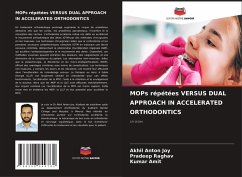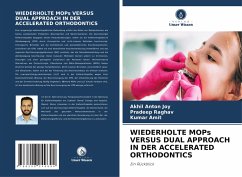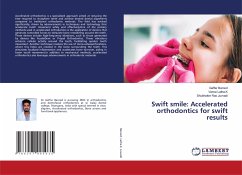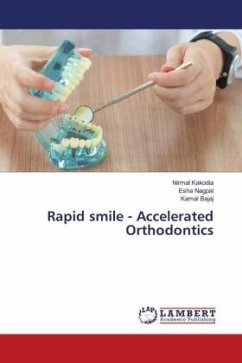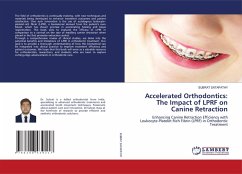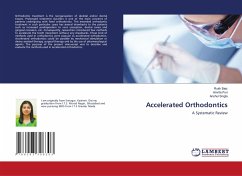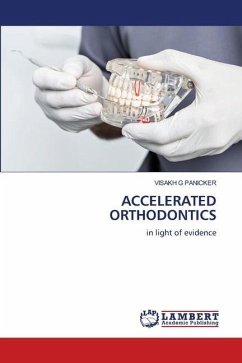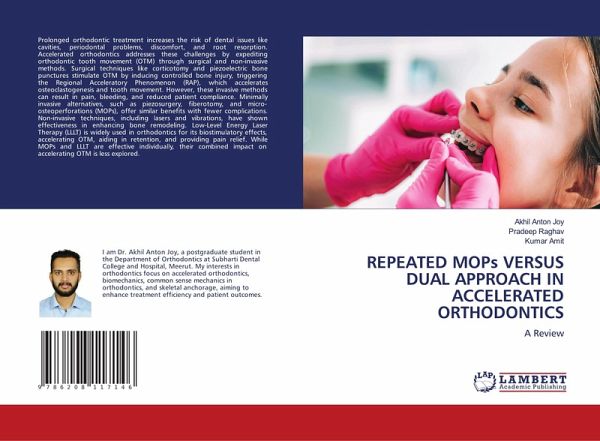
REPEATED MOPs VERSUS DUAL APPROACH IN ACCELERATED ORTHODONTICS
A Review
Versandkostenfrei!
Versandfertig in 6-10 Tagen
29,99 €
inkl. MwSt.

PAYBACK Punkte
15 °P sammeln!
Prolonged orthodontic treatment increases the risk of dental issues like cavities, periodontal problems, discomfort, and root resorption. Accelerated orthodontics addresses these challenges by expediting orthodontic tooth movement (OTM) through surgical and non-invasive methods. Surgical techniques like corticotomy and piezoelectric bone punctures stimulate OTM by inducing controlled bone injury, triggering the Regional Acceleratory Phenomenon (RAP), which accelerates osteoclastogenesis and tooth movement. However, these invasive methods can result in pain, bleeding, and reduced patient compli...
Prolonged orthodontic treatment increases the risk of dental issues like cavities, periodontal problems, discomfort, and root resorption. Accelerated orthodontics addresses these challenges by expediting orthodontic tooth movement (OTM) through surgical and non-invasive methods. Surgical techniques like corticotomy and piezoelectric bone punctures stimulate OTM by inducing controlled bone injury, triggering the Regional Acceleratory Phenomenon (RAP), which accelerates osteoclastogenesis and tooth movement. However, these invasive methods can result in pain, bleeding, and reduced patient compliance. Minimally invasive alternatives, such as piezosurgery, fiberotomy, and micro-osteoperforations (MOPs), offer similar benefits with fewer complications. Non-invasive techniques, including lasers and vibrations, have shown effectiveness in enhancing bone remodeling. Low-Level Energy Laser Therapy (LLLT) is widely used in orthodontics for its biostimulatory effects, accelerating OTM, aiding in retention, and providing pain relief. While MOPs and LLLT are effective individually, their combined impact on accelerating OTM is less explored.





